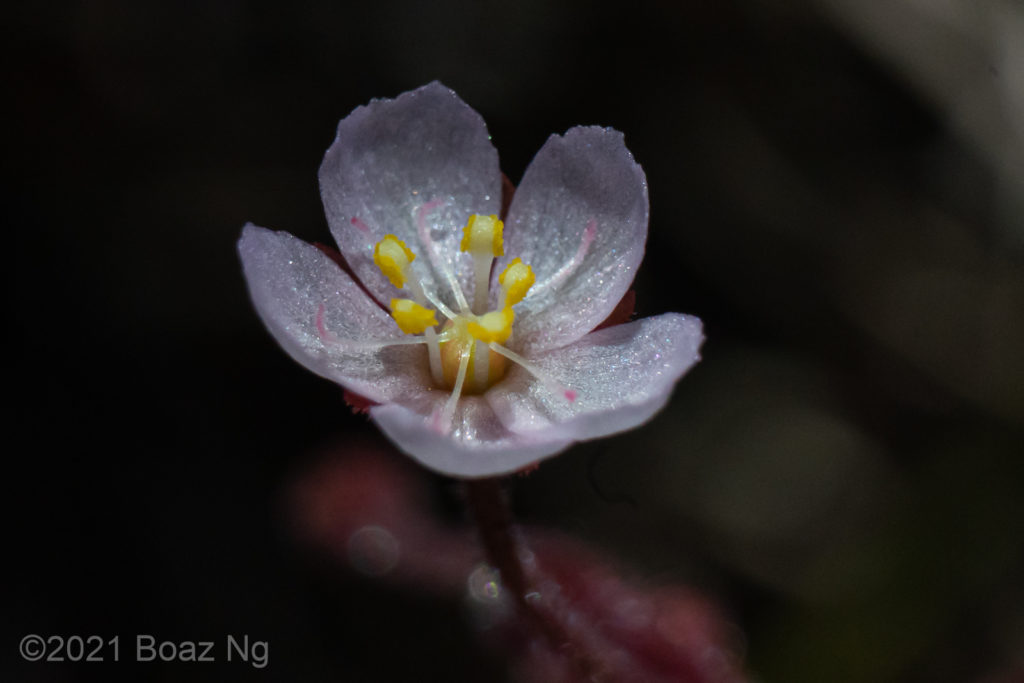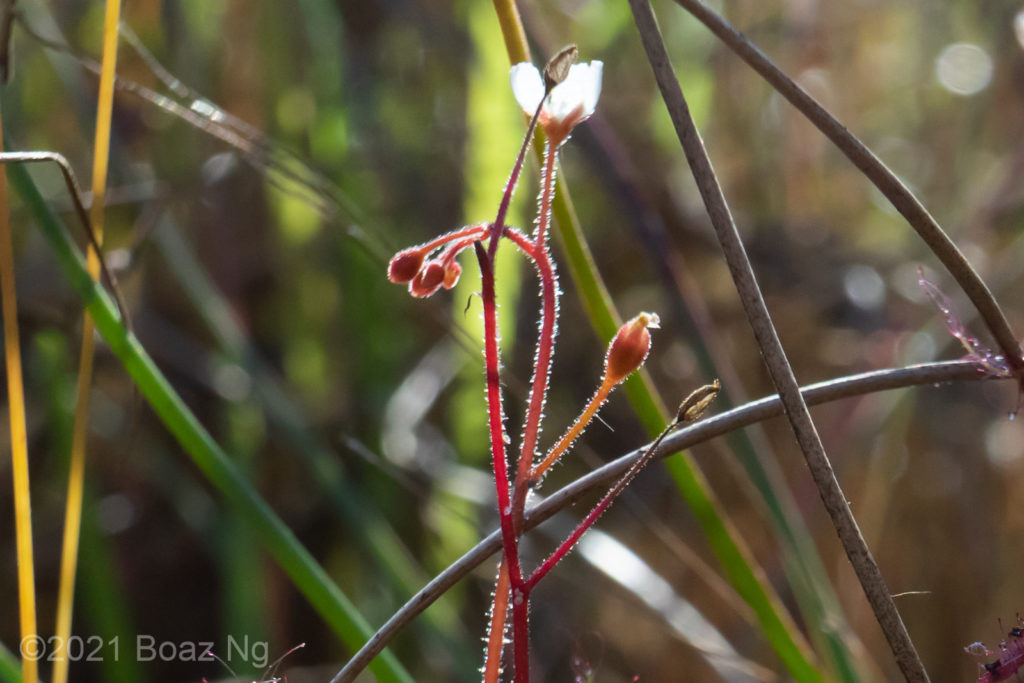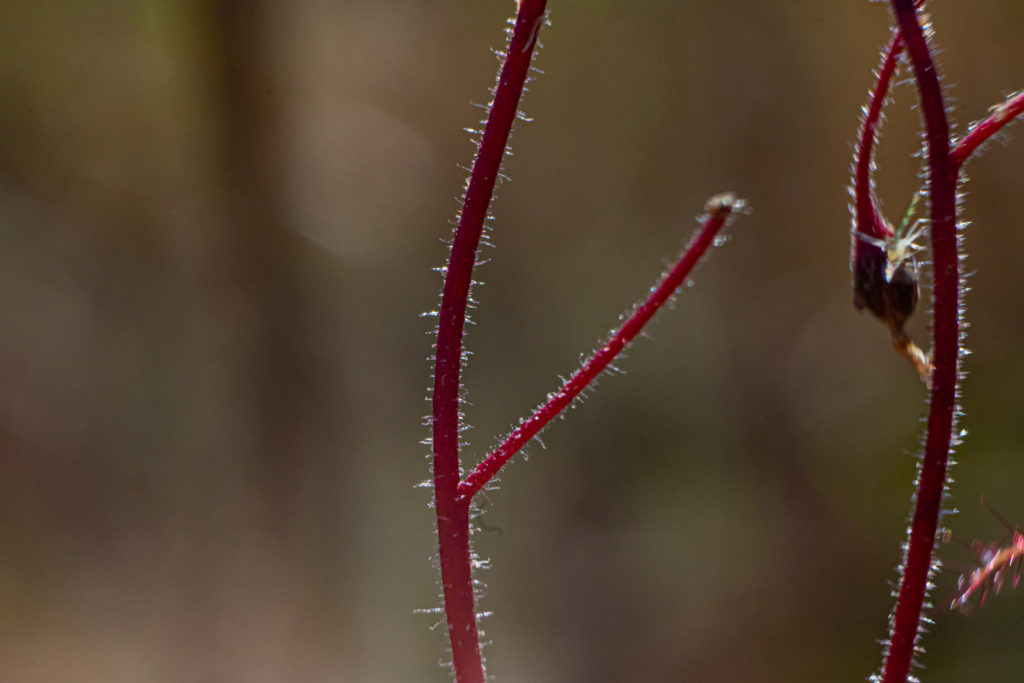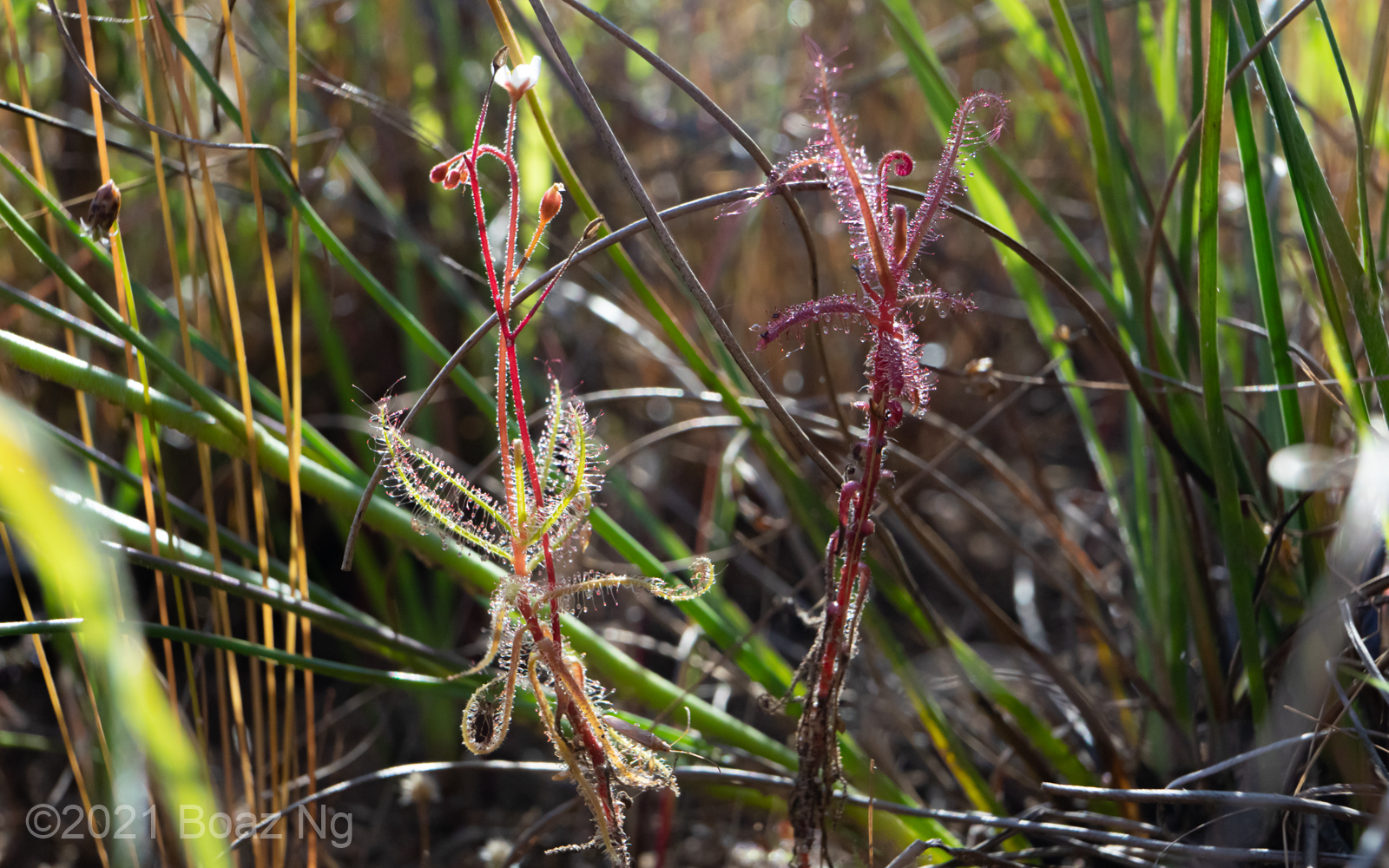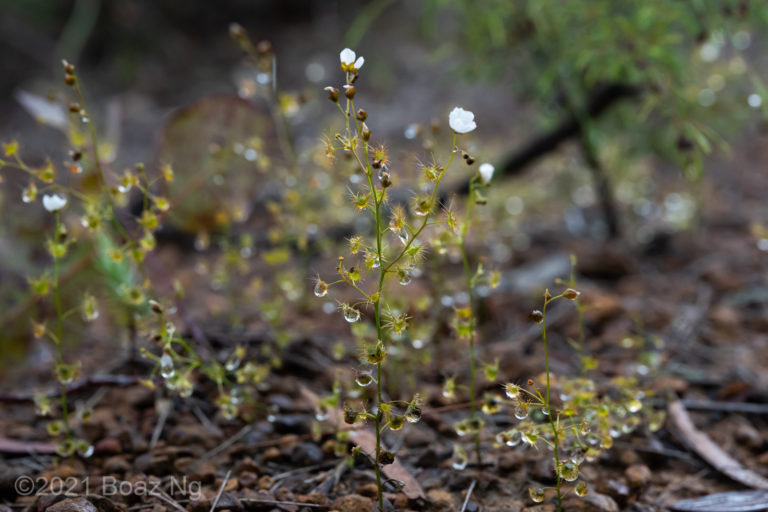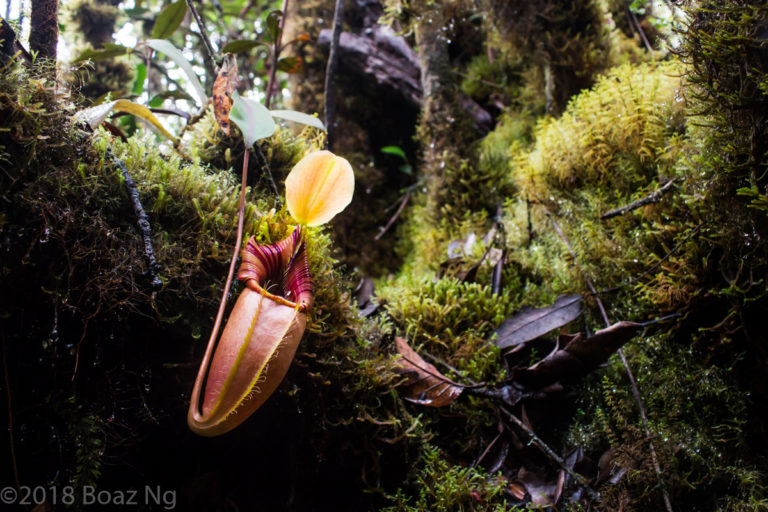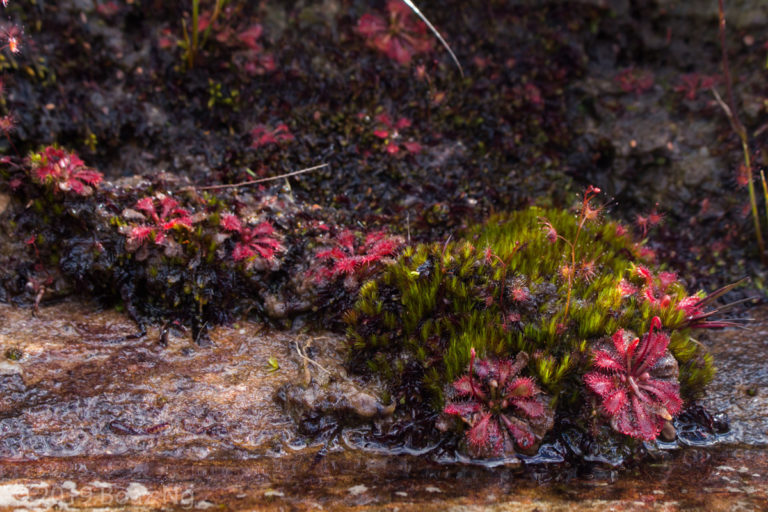Drosera nana is a diminutive sundew in the section Arachnopus (‘indica complex’). It’s specific name refers to its small size, with plants typically reaching less than 10 cm in maturity. The species has very short indistinct petioles, appearing non existent at a glance. The laminae have sticky glands on the top-facing side and are glabrous on the underside. A moderately dense covering of glandular and short non-glandular hairs cover the main stem and flower stalk. The flowers are white, with styles that curl inwards. The pedicels are more or less straight and angled upright.
The species is found in the Top End of Australia around Darwin. It grows in wet sand amongst grasses after the floodwaters recede and dies as its environment desiccates. It grows as an annual, regenerating from seed every season.
D. nana is closely related to 10 other Australian members of the section Arachnopus and grows sympatrically with three other species. It can be recognised in the first instance by its diminutive size and lack of a distinct petiole. Very small flowering specimens of D. aquatica resemble D. nana but can be distinguished by inspecting the flower scape. The pedicels of D. nana are upright whereas those of D. aquatica hang downwards. The non-glandular hairs of D. nana are shorter than those of D. aquatica. In D. nana, the flower is usually white whereas those of D. aquatica are pink.
